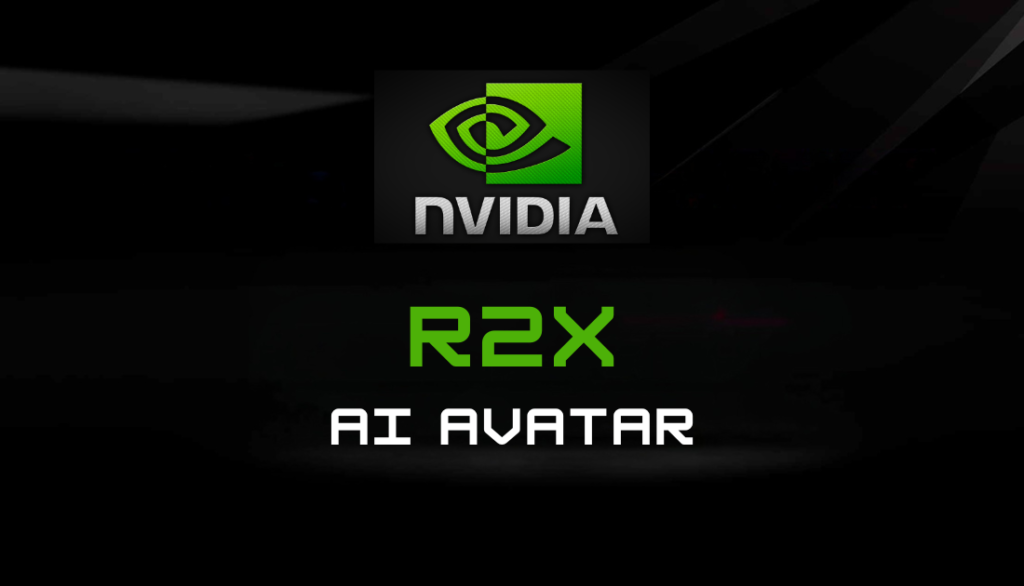Nvidia has unveiled R2X, an innovative AI avatar prototype, at CES 2025. R2X brings a new dimension to desktop-based personal assistants by combining video game-inspired aesthetics with advanced AI capabilities.
Designed for interactive functionality, this AI-driven avatar represents a significant leap in digital assistant technology.
Meet R2X
R2X is a dynamic, visually engaging AI avatar that integrates seamlessly with desktop environments.
It acts as a personal assistant, leveraging Nvidia’s advanced AI models to offer lifelike animations and nuanced expressions.
Users can interact with R2X through text or voice, unlocking various functionalities.
Key capabilities include document processing, live screen assistance, and camera-based contextual guidance, positioning R2X as an essential productivity tool.
Core Features of R2X
- Customizable Intelligence
R2X supports integration with AI models like OpenAI’s GPT-4o and xAI’s Grok, allowing users to fine-tune the assistant’s intelligence for specific needs. - Interactive Commands
Users can talk to R2X, upload files for analysis, or enable screen monitoring for real-time guidance. - Privacy-First Design
By default, features like continuous screenshot processing are disabled, ensuring robust user privacy controls.
Cutting-Edge Technology Behind R2X
Developed with Nvidia’s gaming AI technology, R2X utilizes the RTX Neural Faces algorithm and Audio2Face™-3D for lifelike facial, lip, and tongue movements.
While impressive, the prototype occasionally displays minor glitches, highlighting the challenges of mimicking natural human expressions.
Real-World Applications and Limitations
During demos, R2X showcased its ability to provide step-by-step guidance for software like Adobe Photoshop and process PDFs using retrieval-augmented generation (RAG).
Limitations like inaccurate instructions and intermittent loss of functionality underline the need for further refinements.
Open-Source Availability
Nvidia plans to release R2X as an open-source project by mid-2025, enabling developers to extend its capabilities.
This aligns with the company’s commitment to fostering innovation through customizable AI tools and local deployment options.
Advanced Hardware Powering R2X
The GeForce RTX 50 Series GPUs, built on Nvidia’s Blackwell architecture, are central to R2X’s performance.
With 32GB VRAM and support for FP4 compute, these GPUs deliver groundbreaking AI inference capabilities. This hardware ensures faster, more reliable interactions, enabling complex AI tasks to run locally on consumer-grade devices.
AI Blueprints
Nvidia has integrated AI Blueprints into R2X, offering pre-designed workflows for creative and professional tasks.
- PDF-to-Podcast Workflow: Extracts and converts PDF content into a conversational audio format.
- 3D-Guided Image Generation: Creates AI-driven images with enhanced control using simple 3D scene inputs.
These features make R2X valuable for knowledge workers and creatives alike.
Windows Integration
Through a collaboration with Microsoft, R2X supports Windows Subsystem for Linux (WSL), simplifying integration with frameworks like LangChain.
This cross-platform compatibility ensures smooth deployment across cloud and desktop environments, broadening its appeal.
Agentic Abilities
Nvidia envisions R2X evolving into an agentic AI assistant capable of autonomous actions, such as executing complex tasks on a user’s desktop.
To realize this vision, partnerships with companies like Microsoft and Adobe could be instrumental. Nvidia’s Llama Nemotron open models, optimized for agentic operations, signal the next step in this evolution.
Challenges in User Experience
Despite its potential, R2X is not without flaws. Early users reported instances of the uncanny valley effect, with the avatar occasionally displaying awkward expressions or tones.
Inconsistent performance during demos further highlights the ongoing need for refinement.
Democratizing AI Through Accessibility
With features powered by GeForce RTX 50 GPUs and NIM (Nvidia Interactive Microservices), R2X exemplifies Nvidia’s mission to democratize AI.
With enabling local deployment of sophisticated AI models, Nvidia reduces reliance on costly cloud solutions, making cutting-edge technology more accessible to a broader audience.


